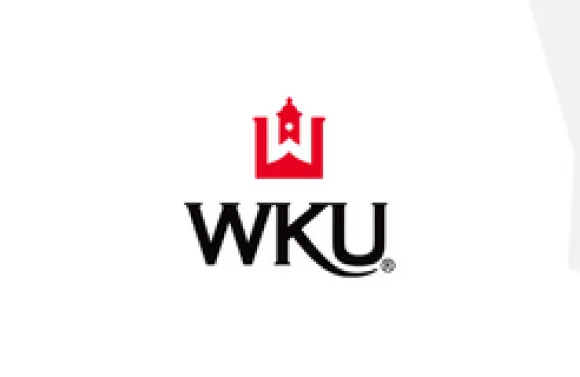
Warren Buffet, world-famous investor and chairman of Berkshire Hathaway, has a way of saying what everyone else in the room is thinking, and if history is any predictor, his words are worth heeding. In 2017, he told a group of investors, “Medical costs are the tapeworm of American economic competitiveness.” Mr. Buffet was referring to the outsized, growing cost of healthcare and the fact that a large portion of those costs are shouldered by employers.1
As business leaders, it’s our fiduciary responsibility to our shareholders and employees to ensure we do everything we can to bend the cost curve and help ensure our companies stay competitive. In this post, we’ll take a look at how three different organizations optimized plan design, vendor management and employee engagement to drive down costs and create sustainable employer-sponsored health plan programs.
State of the Union
During his talk with investors, Mr. Buffet pointed out in that in 1960 healthcare expenditures in the U.S. were around five percent of total GDP. Today, it's approaching 18 percent and heading towards 19 percent. In the very near future, 20 percent of every dollar spent in this country will be spent on healthcare. That 15 percent growth in our GDP is taking away from employers’ ability to pay salaries, invest in their organizations—to grow.
Today, employers are spending approximately $14,000 per employee for sponsored health plans.2 This number may sound high, but we have to remember that every employee on payroll represents more than just one contract, more than just one human. It accounts for that employee’s spouse and any additional family members who are on their plan. And that number—$14,000—is only going to rise.
Health care costs are rising on average six percent every year.3 That means if an employee goes to get an MRI today, when they go to get the same MRI next year, it's going to cost approximately six percent more.
When you think about these rising costs, they're all a part of plan design—they're all a part of how employers share their costs with their employees, resulting in an increase in premiums. Employers across the country have increased their premiums to a point where finding a difference between a traditional PPO and a high deductible health plan (HDHP) is getting more and more difficult. So how do you manage those costs while still offering plans your employees will love? Let’s dive into our first case study to find out.
Case Study 1: Plan Design
A large health system saw they had an increase in utilization across the board. High rates of use of the emergency room and outpatient procedures were the result of having a rather generous health plan design due to the competitive nature of their work and their location. These health plans had small or no co-pay for certain procedures, like diagnostic imaging.
Using Benefitplace Health Insights, they performed an in-depth analysis of their plans and utilization data. Harnessing integrated claims data, they were able to generate “what if” scenarios for various plan types (PPO vs HMO vs POS vs HDHP) to calculate the financial impact of each plan type to their overall program cost and the cost for individual plan members. They modeled the outcome of changes to deductibles, co-pays, coinsurance, out-of-pocket maximums and more. What they discovered was that by making some basic changes in their plan design, they could reduce the outpatient procedures driving up their cost.
The result of putting this forecasted model into place was a staggering 14 percent reduction in outpatient procedures the following year. But they didn’t stop at these significant savings. They continued their analysis in following years and have continued to move more and more to a model that's putting in place urgent care and onsite clinics for the employees at these regional distribution centers within the health system. That’s the power of smart plan design.
Case Study 2: Vendor Management
In this next case study, we’ll examine how having a benefits analytics solution can not only help you forecast future savings and influence smart plan design, but it can also help you recoup money lost to past errors
After being presented with an EOB by one of its union employees, a large employer ran an audit, utilizing the tools in Benefitplace Health Insights, and discovered that their adjudications system was set up incorrectly. This error had resulted in claims being charged to both the employer and the employee.
Armed with this new knowledge, the employer was able to go back to the vendor for a refund of $30,000 for claims paid incorrectly. In addition, they prevented future loss by correcting this process. This crucial component of a mutually beneficial employer/employee relationship played an important role in the employer’s union negotiation and helped them illustrate how they add value beyond plan design.
Case Study 3: Employee Engagement
Employees are at the heart of every benefits program. The employees and their families are the ones depending on these plans to access care. They not only rely on you, the employer, to choose the right vendor, but they also rely on you for support in their decision-making process. At Western Kentucky University (WKU), they know the impact of decision support firsthand.
Western Kentucky University had been offering one PPO plan for 16 years, but they wanted to introduce an HDHP with a wellness incentive tied to premium credits and HSA/HRA funds. As a part of that, they felt a vital piece of the equation was to give employees visibility into what this new offering would mean for their out-of-pocket costs.
By integrating personal claims data into the selection process on Benefitplace, WKU could empower and engage employees through cost transparency based on historical and expected usage. This gave employees a better understanding of the financial impact of their plan choice so they could make a more informed decision about their health plan. For WKU, the result went beyond employee satisfaction, straight to their bottom line: a $2 million reduction in healthcare spend.
Reduce Risk with Data
As we’ve seen from these three case studies, the foundation of a smart benefits program is built on claims data. You must have visibility into your health care expenses in order to make a more informed decision. An administrator needs the right tools to better manage their cost on an ongoing basis. Executives as well as brokers and consultants must have the ability to identify those cost drivers when they build a plan design and put in place cost control initiatives.
All of this information is used to answer three simple, yet vitally important questions:
- What did you spend on health care?
- What will you spend on health care?
- How can you control costs?
Simple questions, yes. But the answers to these questions result in real solutions. As Warren Buffet once said, "Risk comes from not knowing what you're doing."
Learn more about how Health Insights can help you minimize your risk and lower health care costs. Watch this video.
1 New York Times
2 National Business Group on Health, Large Employers 2019 Health Care Strategy and Plan Design Survey
3 PriceWaterhouseCoopers, Behind the Numbers, 2019


